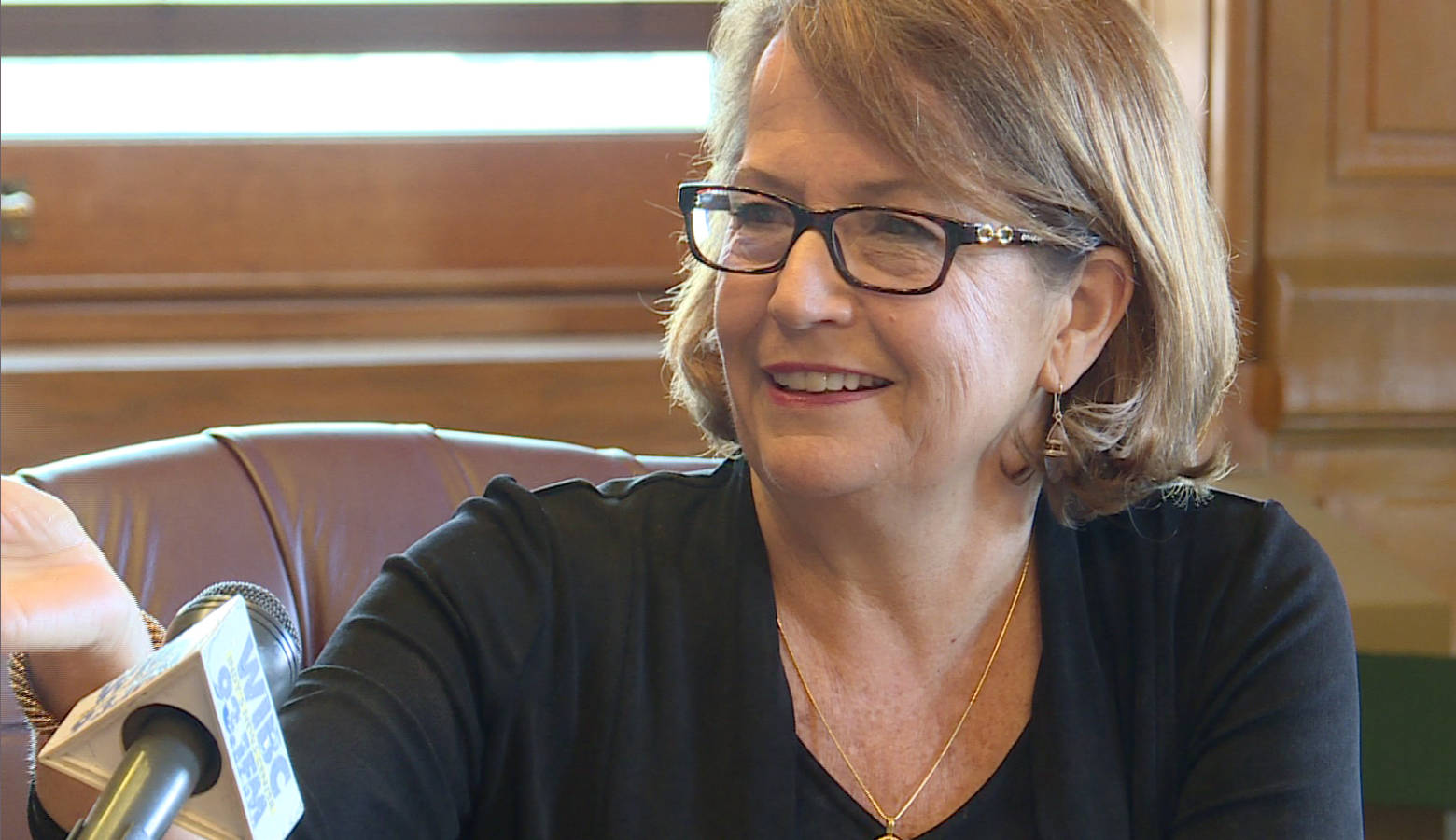Chief Justice Rush Reflects On Lack Of Judicial Diversity In Indiana

A recent study shows state Supreme Courts across the country lack gender and racial diversity – and Indiana is no exception. All but three of the 110 justices in Hoosier State history have been white men.
Indiana Public Broadcasting Statehouse reporter Brandon Smith talks with Chief Justice Loretta Rush – the state’s first female chief justice – about the issue.
Brandon Smith: So, this report from the Brennan Center indicates that Indiana’s certainly not alone but its state Supreme Court, both currently and in its history, really lacks a lot of diversity. Do you agree with that?
Chief Justice Loretta Rush: Yes
Smith: Why do you think that is?
Rush: Wish I knew. And we’re looking at that issue because it really isn’t acceptable. When you look at the role of the judicial branch and our responsibility for the people to come – I mean, the 1.3 million cases that we have coming before us – I think it’s important that our branch represent the diversity of our people.
Smith: Is this a problem that permeates further than the state Supreme Court? Is this a problem of the judiciary in Indiana as a whole?
Rush: I think it’s a problem of all government. I mean, I think it’s not just the judiciary and I think the Brennan Center report is great because it also talked about different rationales that they came up with in their studies on the whys. And I just ran the numbers in Indiana, so we can look at who are our attorneys in Indiana. We have 22,000 attorneys and they are able to – you don’t have to put your race down, the majority do. So, 75 percent are white. 3.24 percent are African American. 1.41 percent are Hispanic. And then, when you look at the judges, we have 677 judicial officers of which 80 percent are – I mean, it sort of matches the same – 80 percent are Caucasian, 12 percent are unknown, over 5 percent are African American, over 1 percent are Hispanic.
So, what can we do to bolster those numbers? What can we do to sort of look back and tap on the shoulders – and we’re working on that. So, when you look at the ICLEO program – Indiana Continuing Legal Education Opportunity – we’ve had 605 graduates from the program. And those are traditionally law students of color, traditionally underrepresented for diversity in it. And then, going back even further, I just had a conversation with IU in Bloomington (Maurer School of Law) Dean (Austen) Parrish in the last couple weeks about starting a program for undergraduate students, again a feeder program to get more traditionally underrepresented individuals in the pipeline towards being lawyers and then judges.
I have looked at, we make a real effort to – and we’re successful – in appointing a number of attorneys of color to some of our boards and commissions. Again, those are different ways that are a path.
Smith: I think when people hear about the idea of diversity, it feels to a lot of people like a box that just has to be checked: ‘Oh, we need to be more diverse.’ Why is it important that our state courts are more diverse?
Rush: You know, I mean I guess I’m a living example. When I graduated from law school in 1983, less than 20 percent of the law school class were women. If somebody asked me can you be a judge, we had never had a woman on the U.S. Supreme Court at the time, so I didn’t see myself as a judge. Now, you know, I had a little girl send me – a fourth grader, name was Maddie, who I didn’t know – and she sent me a picture of herself for history day this year. She had a black wig on, thick black glasses and a robe and she dressed up as the Chief Justice of Indiana. We were in the Supreme Court and this dad was there with his daughter and the daughter goes, ‘OMG Dad, the Chief Justice is a girl.’ I mean, I think you need to see it.
Smith: The two justices of color – Myra Selby and Justice [Robert] Rucker – were both appointed by Democrats. Do you think there’s partisanship behind some of the lack of diversity?
Rush: I don’t know. I can’t tell you that I see that. I’d love to see it on a nonpartisan basis and maybe that would be another way that we could have a larger pool. When I look at the federal appointments right now, I feel like we’re going backwards on our federal judiciary. And I think it’s important that we be aware that. I mean, whether it’s county council, whether it’s school board, you know we haven’t had it with regard to our governor, the Speakers (0f the House) – I mean, there’s a lot of room for growth.
Smith: Thank you so much for sitting down to talk with me.
Rush: Thank you.
Contact Brandon at bsmith@ipbs.org or follow him on Twitter at @brandonjsmith5.

